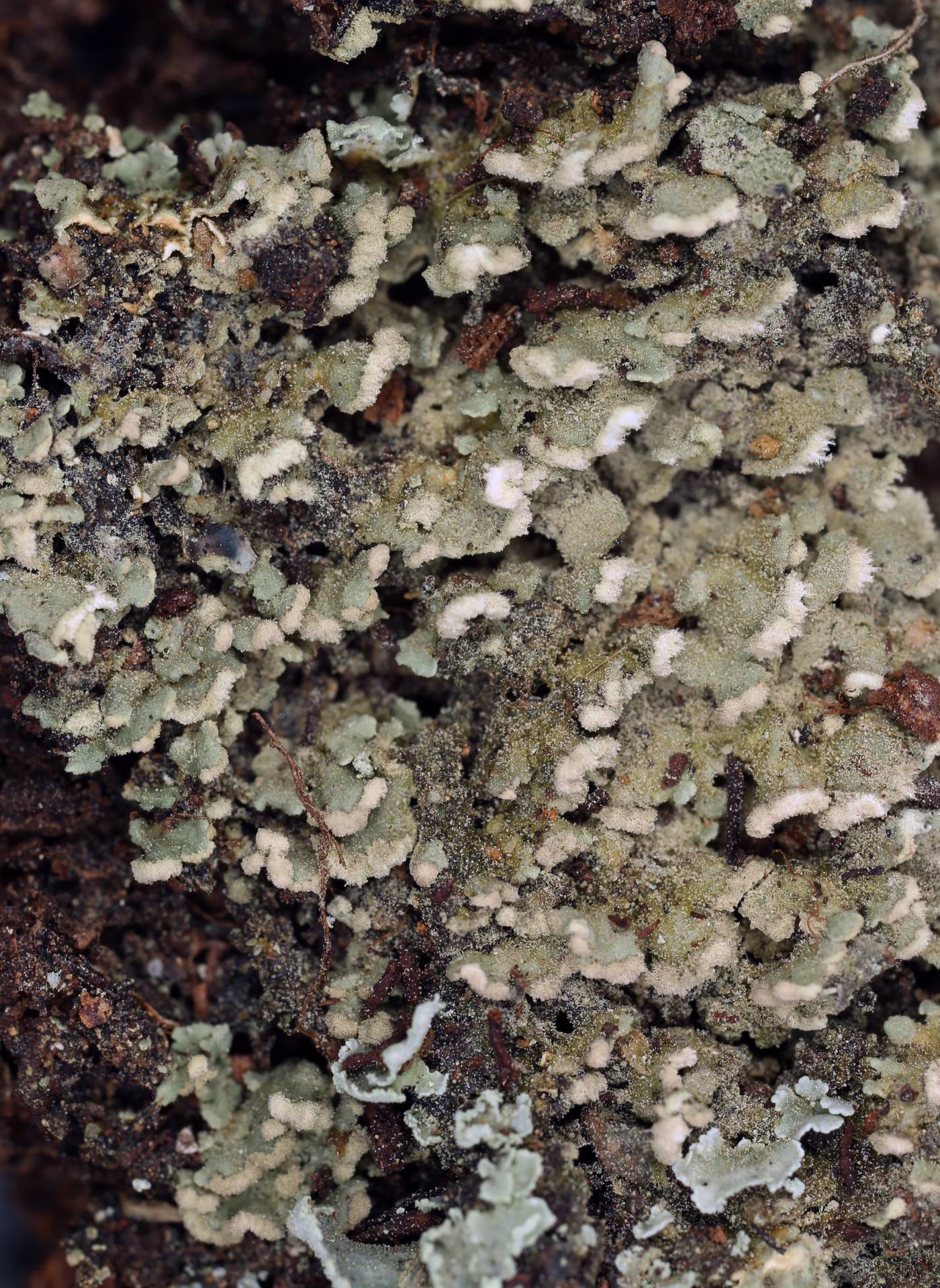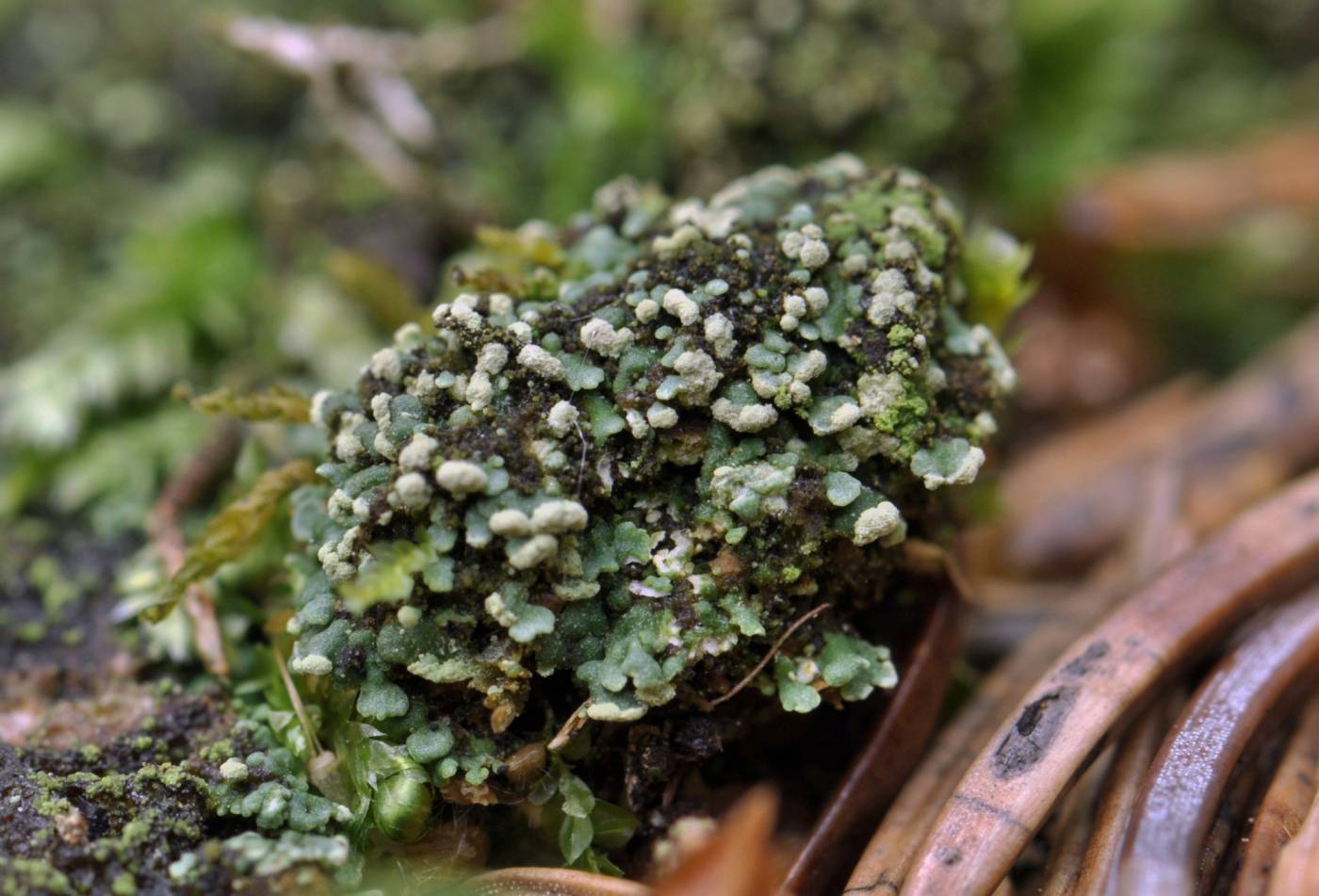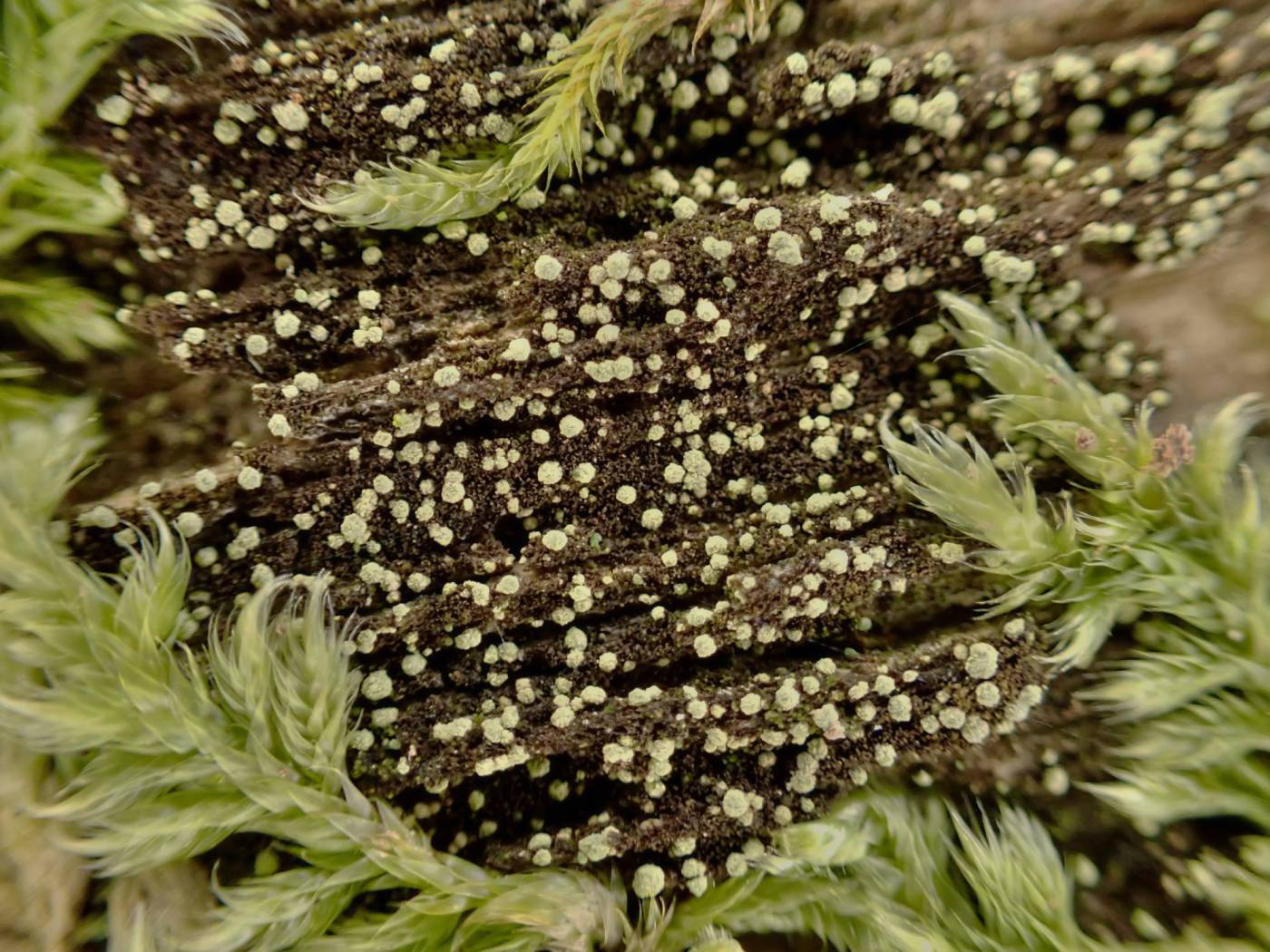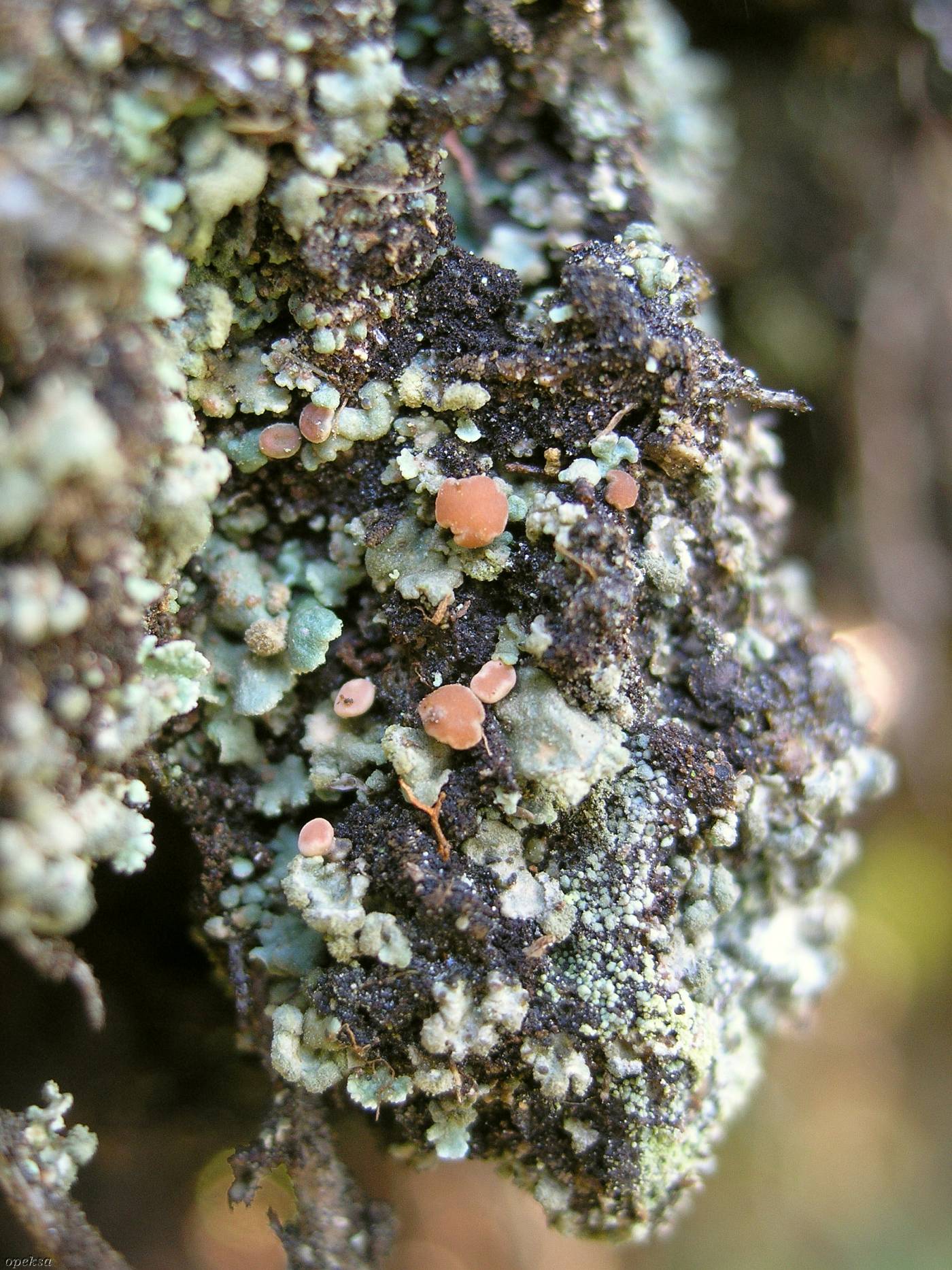A pioneer lichen, often growing in humid natural spruce, beech or pine forests, with available suitable substrates, but it can also be found in managed forest monocultures. The species grows on a variety of organic and inorganic substrates, most commonly decomposing wood and exposed peat, but also on mineral soil, tree bases and rarely on old Polyporus basidiocarps. In the north bohemian rock formations, it also grows on shaded sandstone rocks. Trapeliopsis glaucolepidea has a wide distribution, it can even be found in tropical mountains of Africa and South America. In Europe, its distribution is temperate-boreal. In the Czech Republic, it grows in all forest areas, more rarely in warmer, dry regions.
Trapeliopsis glaucolepidea forms various morphotypes in response to substrate characteristics and competition with other pioneer lichens and bryophytes. Well-developed thalli resemble primary Cladonia squamules, may even be fertile, and are found on exposed peat in pine peatlands or water-logged spruce forests. However, most commonly the thalli are composed of minute areoles or squamules with terminal subcapitate soralia. They are easily overlooked or confused with other Trapeliopsis and Trapelia species, which are usually distinguished by the presence of gyrophoric acid (C+ red).
taxonomic classification:Ascomycota → Lecanoromycetes → Trapeliales → Trapeliaceae → Trapeliopsis
most frequented synonyms:Trapeliopsis percrenataRed List (Liška & Palice 2010):NT – near threatened
Occurrence in the Czech Republic
All records: 177, confirmed 168. One click on a selected square displays particular record(s), including their source(s).




